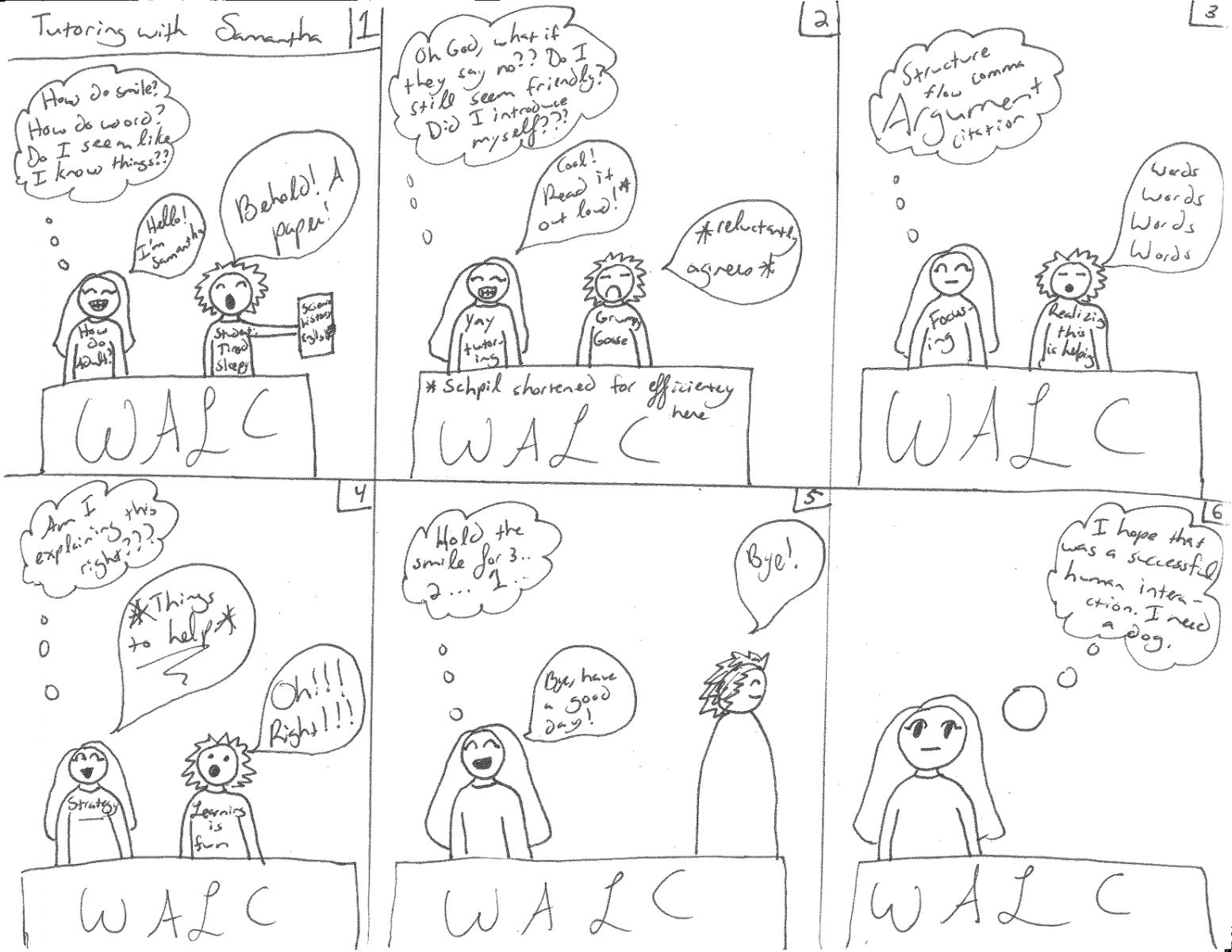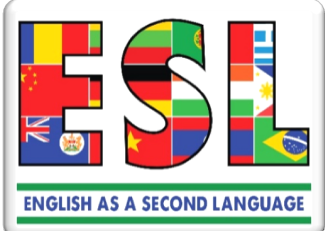–By Kellie S.
Expectations
Before I actually started tutoring—when we were reading and talking about what it was like—I had this unspoken fear. Similar fears have haunted me in the past when I’ve worked with kids. At the worst, I feared I would say or do the wrong thing and totally ruin someone’s life; at the very least, I feared I would hurt their feelings or hinder their learning instead of improving it.
My fear manifested itself a little differently as I prepared for tutoring, though, as I was particularly nervous about offending ESL (English as a Second Language) students—hindering not only their education, but their continued English studies as well.
What if I make them feel stupid with an offhand comment?
What if I don’t help them?
What if I make their papers worse?
What if I panic?
What if I can’t understand them?
What if I don’t have the answers?
What if I just confuse them further?
My generalized anxiety, as well as my ability to conjure the worst possible endings for any scenario, went haywire with all these questions flooding my mind. This fear went way out of proportion before I had even conducted my first tutoring session. My own attempts at personal consolations didn’t seem to help me at all, though I still hoped they were true:
I don’t have all the answers.
…But I know where to find them.
When I was learning Spanish in Costa Rica, it wasn’t just my professor that I was learning from: I appreciated mi familia tica y otras personas that tried to help me in informal settings.
I wasn’t upset with others in Costa Rica when I had a hard time communicating; I merely asked them to speak more slowly (and I wasn’t as fluent in Spanish as ESL students that are taking college-level classes in English).
Reality
Some experiences you just can’t define or adequately prepare for until you have them. Tutoring ESL students proved to be one of those times.
While I had been told that it wasn’t so bad, and I’d been trying to console myself, I still was extremely nervous the first few times I tutored ESL students; yet, the more I talked with them, the more I realized that the differences I dreaded were exactly what made appointments with these individuals so engaging, such a change of pace, and also so rewarding.
My ESL tutees were college students with the same stresses as me and other students. They had the same assignments, went to the same university, and merely had different needs when it came to writing help.
Sergio
After cohosting a workshop on the writing process in a disaster management class, I was surprised to have a student request me as a tutor, and come in for a tutoring appointment. Sergio was easy to talk to, and since we got along quite well, he began to see me for different assignments throughout the semester. At my suggestion, we typically had one-hour sessions to have plenty of time to go through his work, since English was his second language. This gave us a chance to work through repeated tense inconsistencies, awkward fragments and sentences, among other things I typically worked with students on, such as meeting assignment requirements, creating thesis statements, and organizing content.
When I asked Sergio about how tutoring was for him as an ESL tutee, his answer sounded like it could have come from anyone, regardless of their first language. He came to the WaLC the semester before for help, but he did not get connect with his tutor then. While he knew that writing help would benefit him, he did not have a good experience, and since he did not trust his tutor, he stopped coming altogether. After I workshopped with Sergio’s class this semester, he decided to give tutoring a second try, and that went better. He said he has had a good experience with me, as he trusts me, and our sessions have been very helpful to improving his writing.
Sergio’s bottom line as a tutee was this: many ESL students do not come to the WaLC because they are nervous, they are not comfortable with the people here because they have not built trust with them yet. Trust and being comfortable with a tutor are key to having good tutoring experiences, and getting writing help. I feel that this is true for many students, and it was true for me as an undergraduate as well, since I was too nervous to ever step foot in the WaLC, though I would have certainly benefited from it.
As far as ESL students go, just like with our other students, making connections with them in our short sessions is essential. Being real and having a short conversation before diving into someone’s work can make a big difference to how the session will go. While sometimes barriers may exist between native speakers and second language speakers, we can learn from each other. ESL students may have some different specific writing needs, and may require a different type of patience than native speakers, but at the end of the day, they are just other people with writing needs that we can help.
Second Language Differences
I have found that many ESL students are like Sergio – while they may have different levels of English writing and speaking, they are typically very hard-working and focused students. They have been through a lot to study here, and have worked very hard to get their second language to a college level. Like many non-traditional students, they are typically self-driven and here for a specific degree.
Students that are studying abroad may be adjusting to a whole different culture, while students that are becoming or have become US citizens have faced challenges that native speakers have not, such as taking the TOEFL (Test of English as a Foreign Language), a test many native speakers have trouble with as well. Just as we can be sensitive to the stresses that come with any college student’s experience—midterms, finals, big projects, relationships—we can also be aware that ESL students have their own challenges as well, and be willing to work with them.
Tips for Tutoring ESL Students
Be yourself—being real and having a conversation with any student is a key to making them feel comfortable before you even look at their writing.
Be attentive—every student is different. In the case of ESL students, they come from different countries, have different levels of English reading and writing, and all have different personalities. Noticing how comfortable they are with reading, what mistakes they commonly make, and how they respond to your behavior can make a difference in the session as well as future sessions.
Be flexible—if one ESL student reads English aloud very well, but the next does not, adjust. Sometimes when you read their writing aloud as a native speaker, they hear how your grammar changes while you are reading, and they can learn from that.
Do what you can—if one student is having a hard time with a part of a sentence that you have never explained before, or had not thought about in a long time, do what you can. Explain in a way that makes sense to you, and if you cannot, look up the rules or admit that you do not know. Sometimes you do not have time to go over grammar rules that would benefit your tutee, and simply writing down that they can look up dependent clauses or rules for that/which on their own time can be helpful as well.







